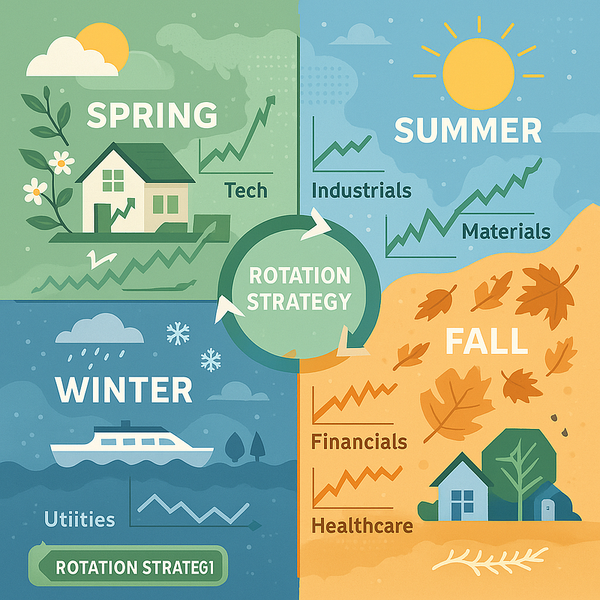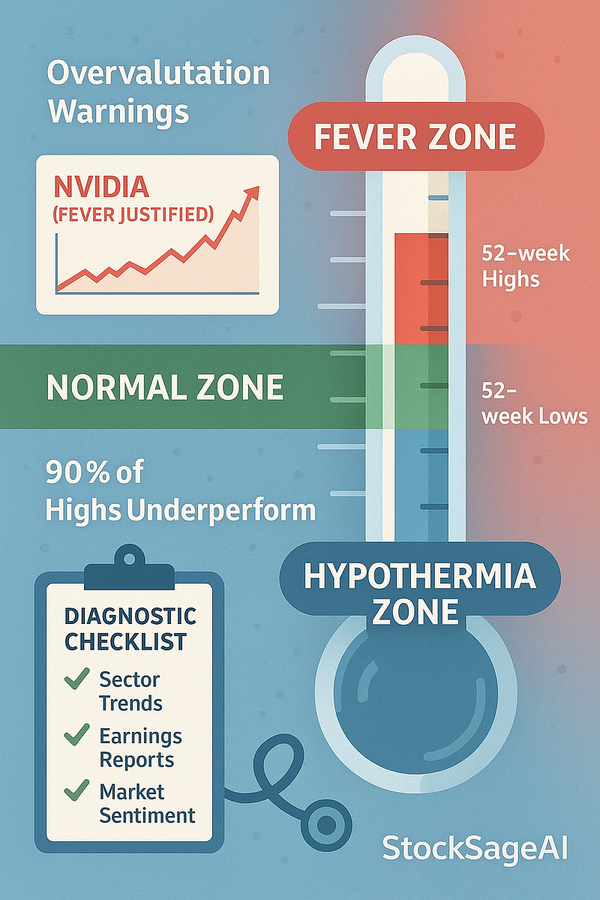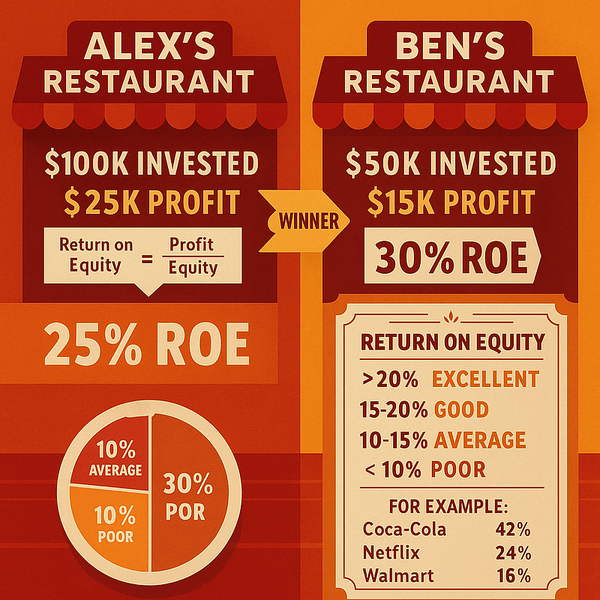Understanding AI Stock Screener: How AI-Powered Tools Enhance Investment Decision Making
Artificial intelligence stock screeners are transforming how investors sift through vast market data to pinpoint high-potential opportunities. By automatically analyzing structured price feeds, unstructured news and social sentiment, and historical indicators,

Artificial intelligence stock screeners are transforming how investors sift through vast market data to pinpoint high-potential opportunities. By automatically analyzing structured price feeds, unstructured news and social sentiment, and historical indicators, these advanced platforms empower data-driven decisions with speed and precision. This guide explores:
- What defines an AI stock screener and how it outperforms traditional filters
- The core mechanisms—machine learning, NLP, real-time data processing, algorithmic automation
- Key benefits—from bias reduction to uncovering hidden trends
- Criteria for selecting the right tool and a beginner’s onboarding roadmap
- Broader AI applications in portfolio optimization, ethical considerations, and Indian market relevance
- Answers to common queries and a look ahead at emerging AI trends in finance
As you read on, you’ll discover how StockSageAI’s proprietary models integrate seamlessly into this landscape to support investors at every stage of their journey.
What Is an AI Stock Screener and How Does It Differ from Traditional Screeners?
An AI stock screener is a software application that leverages artificial intelligence and machine learning to analyze vast datasets, learn complex patterns, and predict potential market moves, whereas traditional screeners rely on static filters and manual indicators. Understanding this distinction lays the foundation for appreciating AI’s accelerated insights and adaptive intelligence.
What Is an AI Stock Screener?
An AI stock screener is a software solution that applies machine learning algorithms and predictive analytics to filter and rank equities based on dynamic criteria and historical patterns. It continually refines its models by incorporating new data, enabling more accurate selection of stocks that align with your strategy.This adaptive approach paves the way for deeper exploration of AI-driven pattern recognition and sentiment analysis in subsequent sections.
How Do AI Stock Screeners Use Artificial Intelligence and Machine Learning?
AI stock screeners harness supervised and unsupervised learning to identify non-obvious correlations among price movements, earnings reports, sector rotations, and macro events. By training on labeled data—such as past bull and bear cycles—they generate classification and regression models that predict probability scores for future performance.As these systems learn, they adjust weighting on key indicators, improving forecast precision and setting the stage for real-time data integration.
What Are the Key Components and Data Sources of AI Stock Screeners?
AI-powered screeners integrate multiple data pipelines—structured feeds (price, volume, fundamentals), unstructured texts (news, social media), and alternative inputs . Core components include:
Component | Function | Example |
|---|---|---|
Machine Learning Engine | Learns patterns and updates predictive models | Neural networks classifying trend signals |
Natural Language Module | Extracts sentiment and thematic signals | Processing earnings call transcripts |
Data Ingestion Pipeline | Normalizes and streams real-time feeds | High-frequency price tick normalization |
Risk Assessment Layer | Calculates drawdowns and volatility metrics | Scenario simulation under stress events |
These modules combine to drive automated signal generation and prepare us to examine how AI enhances speed and accuracy compared to legacy methods.
How Do AI Stock Screeners Compare to Traditional Stock Screening Methods?
AI stock screeners extend beyond fixed threshold filters by learning evolving market dynamics and incorporating qualitative signals. Traditional screeners apply static rules—such as P/E ratios or moving average crossovers—whereas AI systems:
- Continuously retrain on new market regimes
- Weigh unstructured sentiment alongside fundamentals
- Adapt strategies when past correlations break down
This dynamic methodology directly leads into our detailed exploration of AI’s working mechanisms in the next section.
How Do AI Stock Screeners Work? Understanding Their Mechanisms and Technologies
How Does Machine Learning Enable Pattern Recognition and Predictive Modeling?
Machine learning algorithms analyze historical price and fundamental data to detect complex trends that escape manual observation. Supervised models classify bullish versus bearish patterns, while regression networks forecast return distributions. This self-correcting loop refines prediction accuracy, which in turn enhances portfolio allocation strategies.Building on this, we next examine how sentiment shapes those patterns through natural language processing.
What Role Does Natural Language Processing Play in Sentiment Analysis?
Natural language processing decodes text data from news articles, earnings transcripts, and social chatter to gauge market mood. By assigning polarity scores and extracting thematic entities (e.g., “supply chain disruptions”), NLP modules quantify sentiment shifts that often precede price movements, bridging the gap between qualitative insights and quantitative models.With these sentiment scores in hand, AI engines can integrate them alongside structured feeds in real time.
How Is Real-Time Market Data Processed by AI Stock Screeners?
Real-time data ingestion systems stream tick-by-tick quotes, order book depth, and economic releases into a processing pipeline. Event-driven triggers update predictive models within milliseconds, enabling near-instant recalibration of trade signals. This speed advantage reduces execution latency and supports high-velocity decision-making.Such responsiveness also fosters seamless integration with automated execution layers, which we’ll explore next.
How Do AI Stock Screeners Integrate Algorithmic Trading and Automation?
Algorithmic trading modules convert predictive signals into executable orders, automating entry and exit strategies according to pre-specified risk parameters. By leveraging APIs connected to broker platforms, AI screeners can place, adjust, or cancel orders in response to model outputs—ensuring consistent application of data-driven tactics without manual intervention.These automated capabilities underscore significant benefits for investor decision making, as detailed in the following section.
What Are the Benefits of Using an AI Stock Screener for Investment Decisions?

How Does AI Reduce Emotional Bias and Enhance Decision-Making?
AI systems base recommendations on data-driven algorithms, removing human tendencies toward fear and greed. By enforcing objective criteria and backtested models, they reduce impulsive trades and ensure disciplined adherence to strategy, leading to more consistent outcomes under varying market conditions.Reducing emotional noise naturally improves risk outcomes, which links to AI’s broader risk management capabilities.
How Does AI Improve Risk Management and Portfolio Diversification?
AI-driven risk engines calculate real-time drawdowns, tail-risk exposures, and scenario-based stress tests. They optimize portfolio weights by solving multi-objective functions that balance expected return against volatility, leading to diversified allocations that adapt as market regimes shift.This enhanced risk framework also uncovers subtle patterns that traditional approaches overlook, as we’ll see next.
How Does AI Help Identify Hidden Market Opportunities and Trends?
By correlating unconventional datasets—such as supply chain signals, social sentiment shifts, and macroeconomic indicators—AI algorithms detect emerging themes before they become consensus. These early signals reveal under-the-radar opportunities in niche sectors or latent trend reversals, enabling first-mover advantages.Faster insight generation also translates directly into time savings for investors, which we discuss below.
How Does AI Save Time and Increase Speed of Stock Analysis?
Automated data aggregation and model retraining eliminate manual scanning of dozens of screeners and spreadsheets. Investors receive prioritized watchlists and customizable alerts, reducing analysis hours from days to minutes and freeing time for strategic decision-making.
How AI Stock Screeners Identify and Categorize Stocks
AI stock screeners employ sophisticated algorithms to analyze a wide array of Key Performance Indicators (KPIs) and metrics, enabling them to identify and categorize stocks into various investment buckets. This goes beyond simple rule-based filtering by learning complex relationships and predicting future performance based on these indicators.
Core Mechanisms and Data Monitoring
AI screeners continuously monitor and process data from diverse sources, including:Structured Data:
- Price and Volume Data (e.g., daily returns, trading volume, volatility)
- Fundamental Data (e.g., P/E ratio, EPS growth, debt-to-equity ratio, revenue growth, profit margins)
- Economic Indicators (e.g., inflation rates, interest rates, GDP growth)
- Analyst Ratings and Price Targets
Unstructured Data:
- News Articles and Press Releases
- Social Media Sentiment (e.g., Twitter, Reddit)
- Earnings Call Transcripts
- Management Commentary and Filings
Key Performance Indicators (KPIs) and Metrics Monitored by AI
AI algorithms are trained to recognize patterns and predict outcomes based on a vast set of KPIs and metrics. These can be broadly categorized as follows:
1. Valuation Metrics
These metrics help assess whether a stock is overvalued, undervalued, or fairly priced relative to its fundamentals or peers.
- Price-to-Earnings (P/E) Ratio: Compares a company's stock price to its earnings per share.
- Price-to-Sales (P/S) Ratio: Compares a company's stock price to its revenue per share.
- Price-to-Book (P/B) Ratio: Compares a company's market capitalization to its book value.
- Dividend Yield: The annual dividend per share divided by the stock's price.
- Enterprise Value to EBITDA (EV/EBITDA): A valuation metric used to compare companies of different sizes.
2. Growth Metrics
These indicators measure a company's ability to increase its revenue, earnings, and market share over time.
- Revenue Growth Rate: The percentage increase in a company's revenue over a specific period.
- Earnings Per Share (EPS) Growth: The percentage increase in a company's earnings per share.
- Sales Growth: Year-over-year or quarter-over-quarter increase in sales.
- Net Income Growth: The increase in a company's profit.
3. Profitability Metrics
These KPIs assess how effectively a company generates profits from its operations.
- Gross Profit Margin: (Revenue - Cost of Goods Sold) / Revenue.
- Operating Profit Margin: Operating Income / Revenue.
- Net Profit Margin: Net Income / Revenue.
- Return on Equity (ROE): Net Income / Shareholder's Equity.
- Return on Assets (ROA): Net Income / Total Assets.
4. Financial Health and Solvency Metrics
These metrics evaluate a company's ability to meet its financial obligations.
- Debt-to-Equity Ratio: Total Debt / Shareholder's Equity.
- Current Ratio: Current Assets / Current Liabilities.
- Quick Ratio: (Current Assets - Inventory) / Current Liabilities.
- Interest Coverage Ratio: Earnings Before Interest and Taxes (EBIT) / Interest Expense.
5. Market Sentiment and Momentum Indicators
These metrics gauge the prevailing mood and direction of stock prices, often derived from technical analysis and news sentiment.
- Moving Averages (e.g., 50-day, 200-day): Smooth out price data to identify trends.
- Relative Strength Index (RSI): Measures the magnitude of recent price changes to evaluate overbought or oversold conditions.
- MACD (Moving Average Convergence Divergence): A trend-following momentum indicator.
- Sentiment Scores: Derived from NLP analysis of news and social media, indicating positive, negative, or neutral sentiment.
- Trading Volume Analysis: High volume can confirm price trends.
6. Qualitative and Alternative Data Insights
AI's strength lies in processing data that is difficult for humans to analyze at scale.
- News Sentiment Analysis: Gauging the tone of news coverage related to a company or sector.
- Social Media Buzz: Tracking mentions and sentiment on platforms like Twitter and Reddit.
- Management Commentary: Analyzing the language used in earnings calls and investor presentations for forward-looking statements or subtle shifts in tone.
- Supply Chain Disruptions: Identifying potential impacts on a company's operations based on external data.
Categorizing Stocks into Investment Buckets
Based on the analysis of these KPIs and metrics, AI screeners can categorize stocks into various investment buckets, such as:
- Growth Stocks: Companies with high revenue and earnings growth potential, often reinvesting profits back into the business.
- Value Stocks: Companies that appear to be trading below their intrinsic value, often characterized by low P/E or P/B ratios.
- Income/Dividend Stocks: Companies that consistently pay out a significant portion of their earnings as dividends.
- Momentum Stocks: Stocks that have shown strong recent price performance and are expected to continue their upward trend.
- Undervalued Gems: Stocks that may not fit traditional value metrics but exhibit strong underlying fundamentals and positive sentiment signals.
- High-Risk/High-Reward: Stocks with high volatility or speculative potential, often in emerging industries or with significant turnaround potential.
- Quality Stocks: Companies with strong balance sheets, consistent profitability, and stable management.
By continuously learning and adapting, AI stock screeners provide a dynamic and nuanced approach to stock selection, helping investors identify opportunities that align with their specific strategies and risk appetites.
Which Are the Best AI Stock Analysis Tools and How to Choose the Right Screener?
What Key Features Should You Look for in an AI Stock Screener?
When comparing AI solutions, prioritize:
- Customizable screening criteria and model parameters
- Robust backtesting engine with walk-forward analysis
- Real-time alerting for threshold breaches or pattern triggers
- Comprehensive visualization and reporting dashboards
- Transparent model explanations to build trust in recommendations
Choosing a platform that excels in these areas sets the foundation for successful adoption.
How Does StockSageAI Compare to Other Leading AI Stock Screeners?
StockSageAI differentiates itself through proprietary ensemble models that combine neural network forecasts with sentiment-enhanced fundamental analysis, offering:
- Dynamic weighting of sentiment and technical factors
- Interactive scenario analysis for stress testing
- Explainable AI modules that illustrate key drivers behind each signal
These exclusive capabilities deliver deeper transparency and precision compared to conventional solutions, guiding investors toward confident outcomes.
What Are the Best Free and Paid AI Stock Screeners Available in 2025?
Investors can access a spectrum of options from no-cost web interfaces to enterprise-grade desktop suites:
Platform Model | Access Level | Core Capabilities | Ideal User |
|---|---|---|---|
Freemium Web Screener | Free tier | Basic technical filters and watchlists | Casual traders |
Subscription-Based Suite | Paid monthly | Full backtesting, real-time alerts | Active retail traders |
Enterprise AI Platform | Paid annual | Multi-asset support, API integration | Institutional teams |
Whether you seek a free entry point or a comprehensive professional toolkit, matching access level to strategy ensures optimal alignment.
How to Get Started with an AI Stock Screener: A Step-by-Step Guide for Beginners
Begin your AI-driven journey in four steps:
- Create your account on the platform of choice
- Define your investment objectives and risk parameters
- Customize screening filters and model settings
- Monitor generated watchlists and set alert thresholds
Start Your AI-Powered Investment Journey: StockSageAI – Login
Following these steps provides a smooth onboarding experience and positions you to harness AI’s full potential.
How Is AI Transforming Investment Decision Making Beyond Stock Screening?
How Does AI Support Portfolio Optimization and Automated Trading?
Optimization engines leverage mean-variance frameworks enhanced with predictive return inputs to rebalance portfolios dynamically. Automated trading bots then execute orders based on real-time signals, enforcing disciplined strategies and reducing slippage through smart order routing.This seamless integration underscores AI’s transformative role, though it also raises important ethical and risk considerations.
What Ethical Considerations and Limitations Exist in AI-Driven Investing?
While AI enhances decision rigor, practitioners must address model bias, data privacy, and over-reliance on historical patterns. Ensuring transparency through explainable AI and instituting guardrails against unintended allocations are essential for responsible deployment.Balancing innovation with robust oversight fosters greater trust and paves the way for broader adoption.
How Is AI Used for Technical Analysis Versus Fundamental Analysis?
In technical analysis, AI applies pattern recognition to price series—uncovering fractal structures and momentum breakouts. For fundamental analysis, it quantifies earnings call sentiment and supply chain insights to forecast valuation shifts. Combining both approaches yields a holistic view that transcends siloed methods.This integrated perspective also informs region-specific applications, such as in India’s markets.
How Is AI Stock Screening Relevant to the Indian Stock Market (NSE and BSE)?
Indian exchanges present unique characteristics—such as sectoral concentrations and regulatory dynamics—that AI models can learn from local data feeds and vernacular news sources. Custom-trained language models capture region-specific sentiment, enabling tailored screening for NSE and BSE equities.
What Are Common Questions About AI Stock Screeners?
Can AI Predict Stock Prices Accurately?
AI improves forecast accuracy by identifying nonlinear relationships and incorporating multi-source sentiment. While no model achieves perfect predictions, properly backtested systems can outperform human benchmarks by leveraging adaptive learning and scenario analysis.Anticipating this predictive strength clarifies AI’s role as a decision support tool.
What Data Sources Do AI Stock Screeners Use?
AI screeners ingest a blend of structured feeds—price, volume, fundamentals—and unstructured content—news, social media, transcripts. They may also integrate alternative data like credit card spend patterns or satellite imagery to enrich predictive signals.Diverse inputs build a more comprehensive market picture and enhance resilience across regimes.
Is There an AI for Picking Stocks Automatically?
Automated stock-picking bots use predictive models to generate ranked watchlists and execute orders based on predefined strategies. These systems serve as extensions of the screener output, converting prioritized signals into systematic trades without human intervention.This automation capability underscores the end-to-end value of AI workflows.
How Does AI Improve Investment Decision Making Compared to Human Analysis?
AI handles massive data volumes with consistent methodology, eliminating emotional drift and cognitive biases. It identifies subtle patterns and rapidly adjusts to changing conditions, enabling decisions grounded in data rather than intuition alone.Recognizing these strengths highlights AI’s complementary role alongside experienced human judgment.
What Does the Future Hold for AI Stock Screeners and AI in Finance?
What Are the Emerging Trends in AI for Stock Market Analysis?
Cutting-edge research focuses on self-learning architectures that adjust weighting without human intervention, federated learning for privacy-preserving insights, and multi-modal models that merge text, image, and time-series data for richer forecasts.These advancements signal a future where AI systems evolve continuously alongside market complexity.
How Will Explainable AI Build Trust in Investment Tools?
Explainable AI frameworks break down model decisions into interpretable factors—highlighting which variables drove a recommendation. This transparency fosters investor confidence, supports compliance, and accelerates institutional adoption.Greater interpretability reinforces AI’s role as a reliable advisor, not a black box.
Which AI Stocks and Technologies Are Key to Watch in 2025?
Semiconductor leaders driving GPU innovations, cloud-based data analytics platforms, and specialized AI software providers form the backbone of financial AI infrastructure. Keeping an eye on companies advancing high-performance computing and algorithmic research will identify critical enablers of next-gen tools.Anticipating these trends equips investors to align portfolios with the engines powering AI’s future.Artificial intelligence stock screeners have ushered in an era of data-driven precision, offering investors of all experience levels the tools to navigate markets with confidence. By understanding core concepts, mechanisms, benefits, and selection criteria—alongside emerging trends and ethical considerations—you can harness AI’s full potential. Explore StockSageAI’s platform to begin transforming your investment decisions today.




